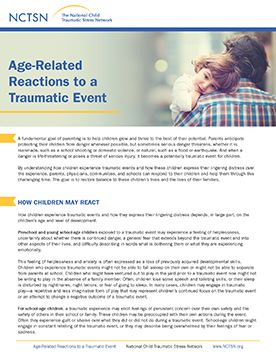
Age-Related Reactions to a Traumatic Event
Describes how young children, school-age children, and adolescents react to traumatic events and offers suggestions on how parents and caregivers can help and support them.
A windstorm is a storm with high winds or violent gusts that are strong enough to cause at least some damage to trees and buildings. Windstorms usually involve wind speeds that exceed 34 mph. Damage from windstorms occurs from gusts, or short bursts of high-speed winds, as well as longer periods of stronger, sustained winds. Windstorms can take several forms, including downbursts, derechos, haboobs, and dust storms. When windstorms carry fine particles, as in a dust storm, they can reduce visibility quickly and may lead to accidents and massive car and truck pile-ups. Dangerous wind gusts are very difficult to predict and can occur without warning, so thunderstorm or dust storm warnings may be the only warning that they might occur.
Being prepared beforehand is the best way to help children and family members stay safe after a windstorm. To improve their preparedness, families should:
Knowing what to do during a windstorm can help families feel more in control and take steps to increase their safety. Consider the following:
During a severe thunderstorm, families should:
During a dust storm, families should:
To address children’s reactions during a windstorm, parents and caregivers can:
After a windstorm, most families will adjust and be able to return to their normal routines rather quickly. Most children will demonstrate resilience. Some children may react more strongly, however, if their homes or schools experienced damage. Parents and caregivers can support children by modeling effective problem-solving, maintaining consistent daily routines, and providing accurate information about repairs and changes the family or community will need to make after the storm. Those children who have experienced a loss of a loved one or pet will need additional grief support to help them adjust.
Below are resources to support children, families, and communities to recover after windstorms.

Describes how young children, school-age children, and adolescents react to traumatic events and offers suggestions on how parents and caregivers can help and support them.
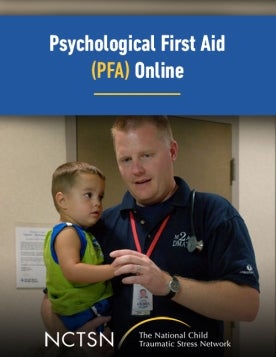
Includes a 5-hour interactive course that puts the participant in the role of a provider in a post-disaster scene. This course is for individuals new to disaster response who want to learn the core goals of PFA, as well as for seasoned practitioners who want a review.

Ofrece ideas de actividades para padres y cuidadores cuyas familias se están refugiando en el lugar, sin electricidad y recuperándose de un huracán u otro evento.
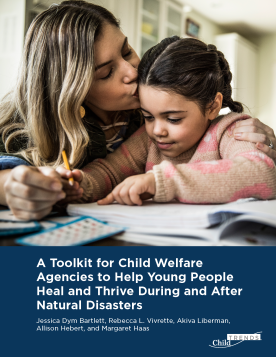
Helps child welfare agencies support children and youth during and after natural disasters. This toolkit is for child welfare staff, supervisors, and administrators who work with and on behalf of children, youth, and families who experience a natural disaster.
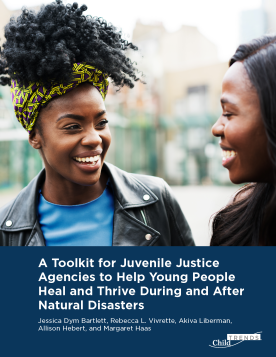
Helps juvenile justice agencies support children and youth during and after natural disasters. This toolkit is for juvenile justice staff, supervisors, and administrators who work with and on behalf of children, youth, and families who experience a natural disaster.
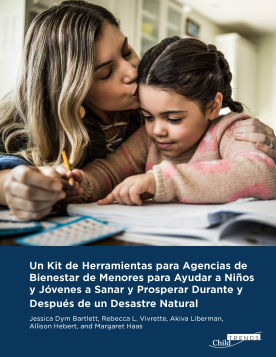
Ayuda a las agencias de bienestar infantil a apoyar a los niños y jóvenes durante y después de los desastres naturales.
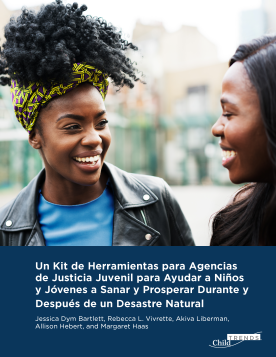
Ayuda a las agencias de justicia juvenil a apoyar a los niños y jóvenes durante y después de los desastres naturales.
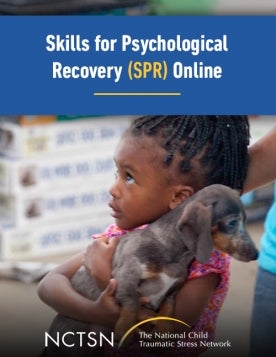
Aims to help survivors gain skills to manage distress and cope with post-disaster stress and adversity. This course utilizes skills-building components from mental health treatment that have been found helpful in a variety of post-trauma situations.

Helps parents talk to their kids about the disasters they may face and know how best to support them throughout—whether sheltering-in-place at home, evacuating to a designated shelter, or helping your family heal after reuniting.
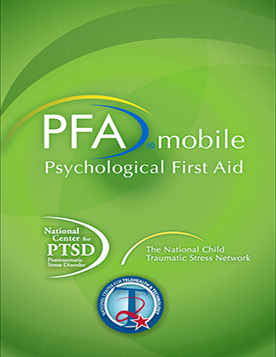
Lets responders review PFA guidelines and assess their readiness to deliver PFA in the field.
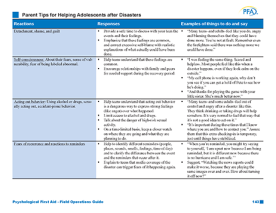
Is a handout from Psychological First Aid Field Operations Guide (PFA). This handout provides parents with common reactions after a disaster, ways to respond to those reactions, and examples of things you can say to your adolescent.

Is a handout from Psychological First Aid Field Operations Guide (PFA). This handout provides parents with common reactions after a disaster, ways to respond to those reactions, and examples of things you can say to your infants or toddlers.